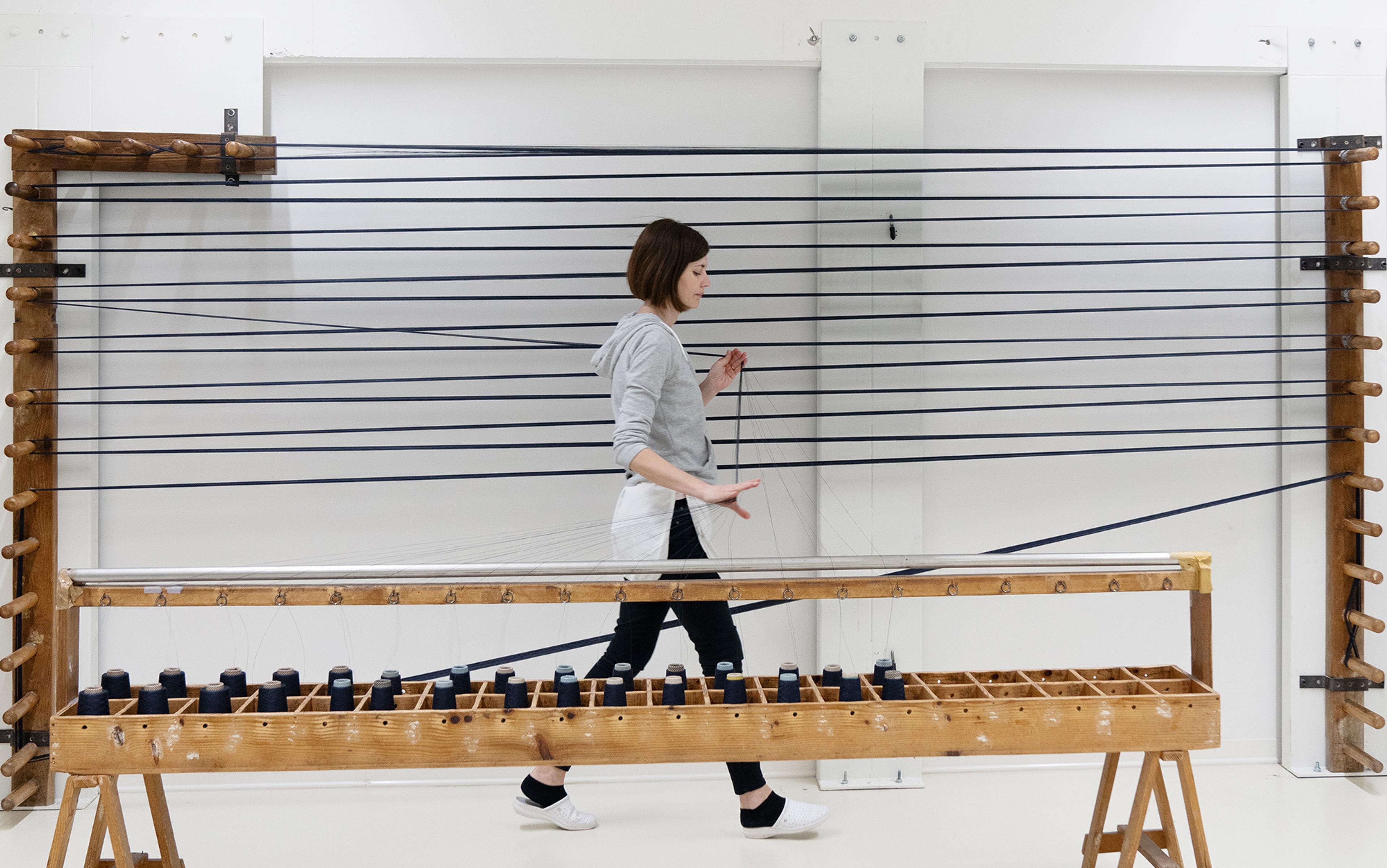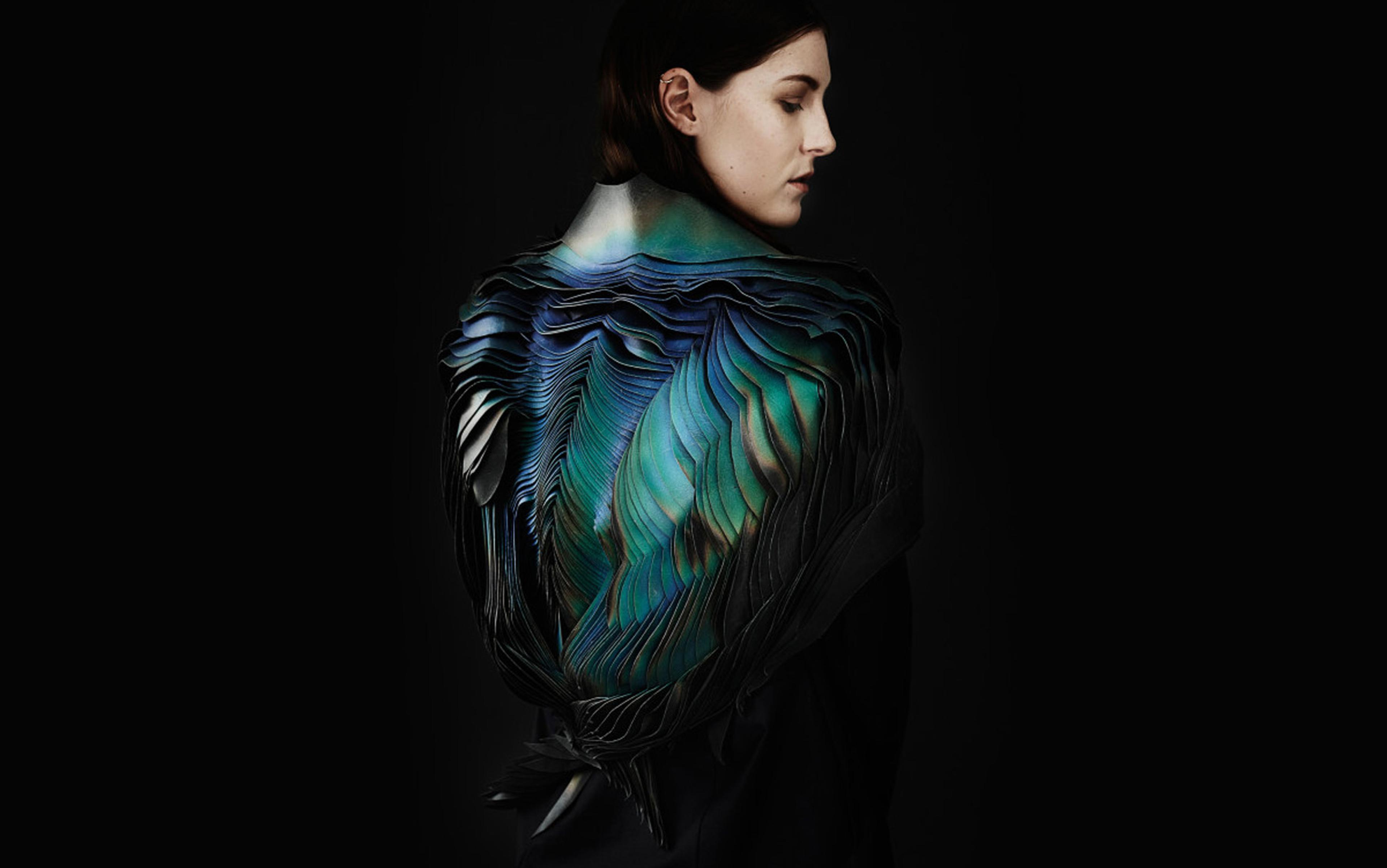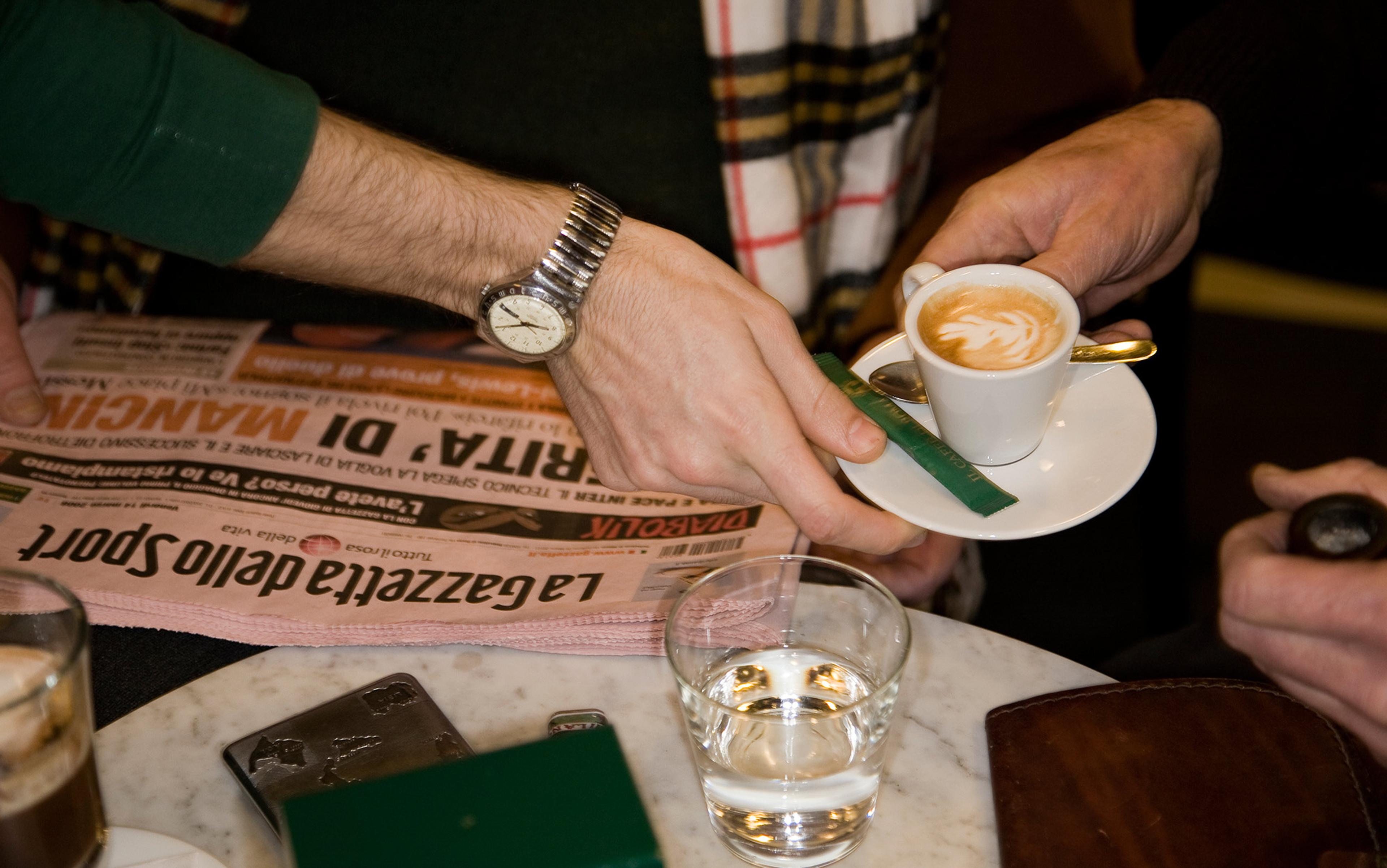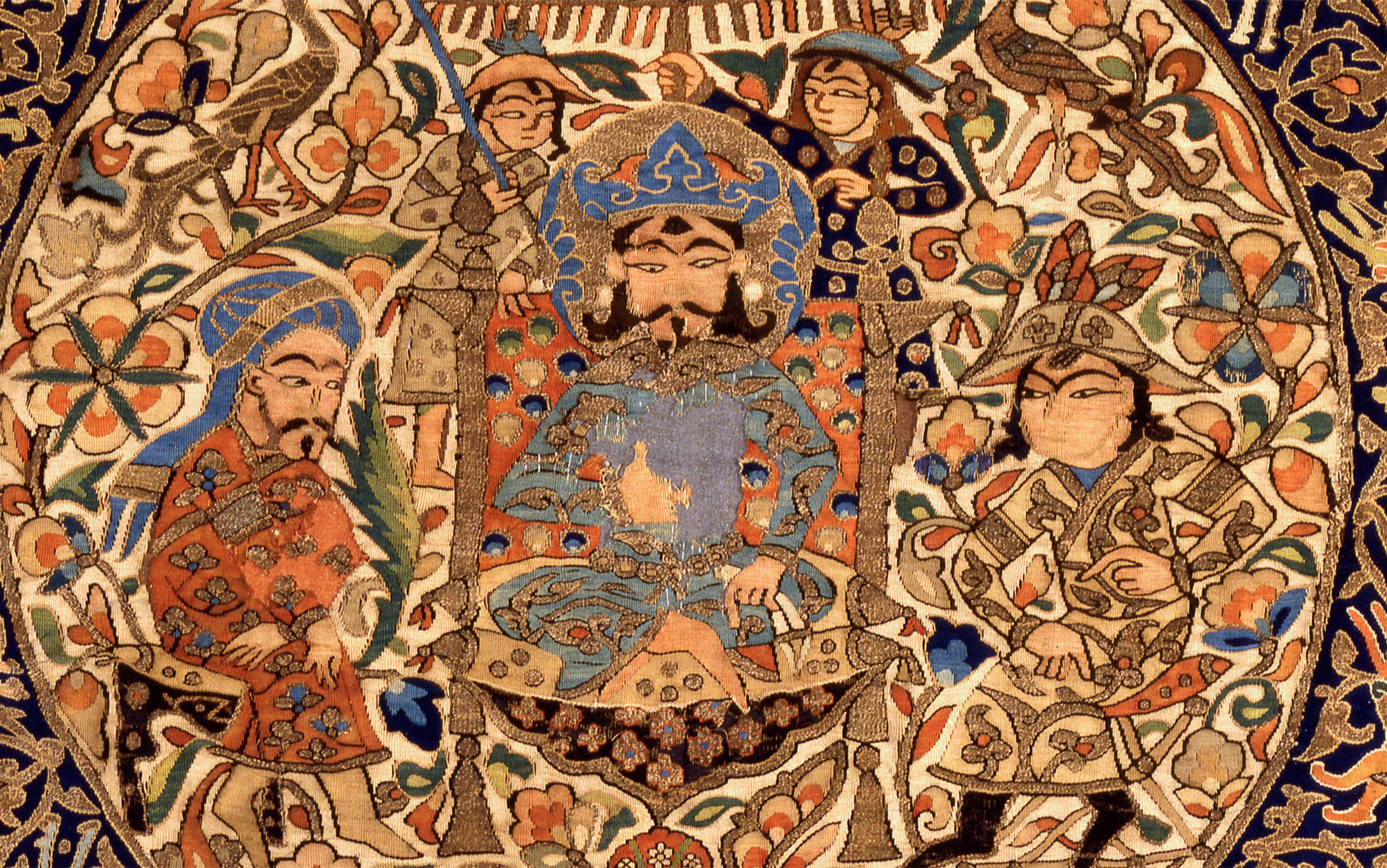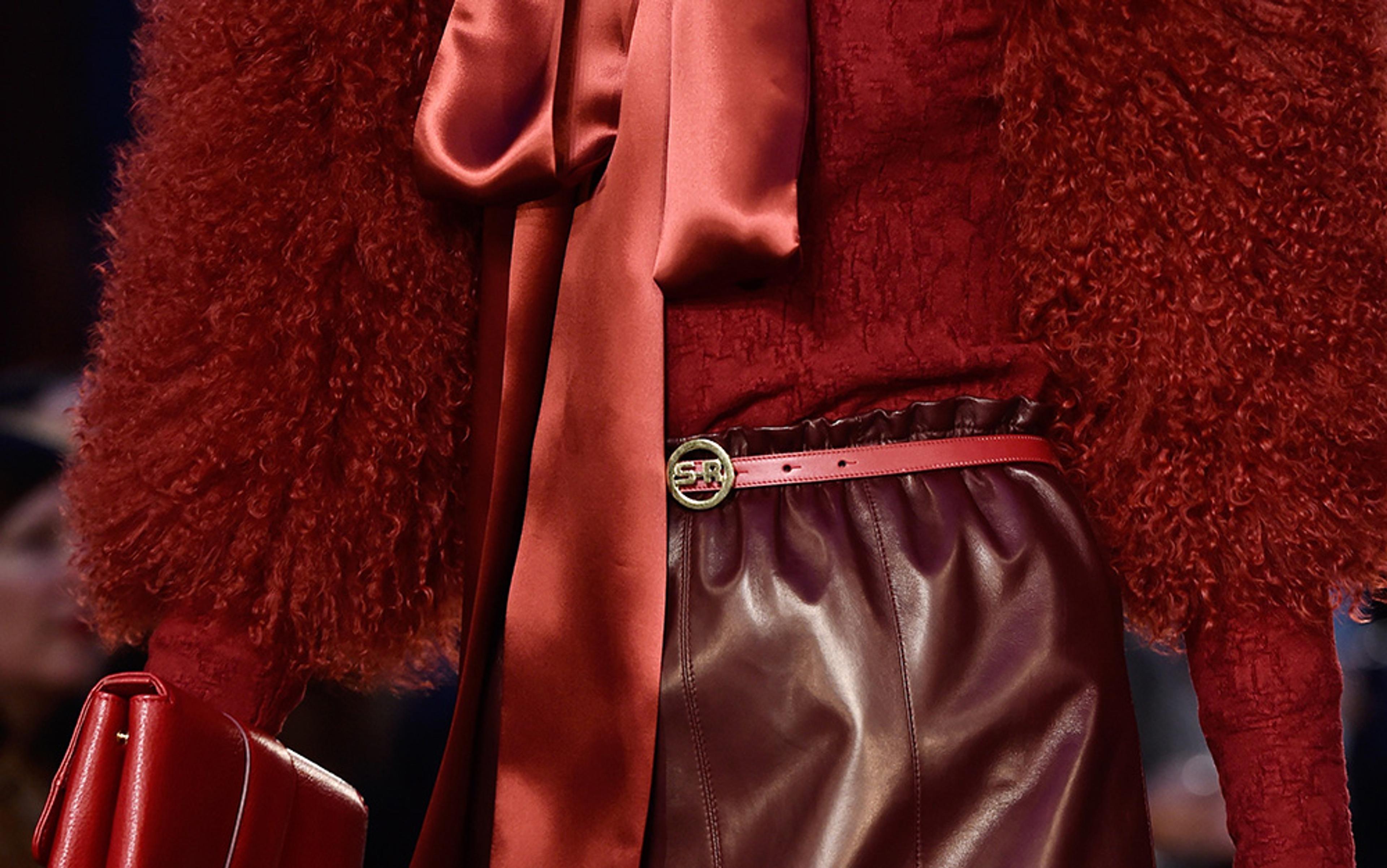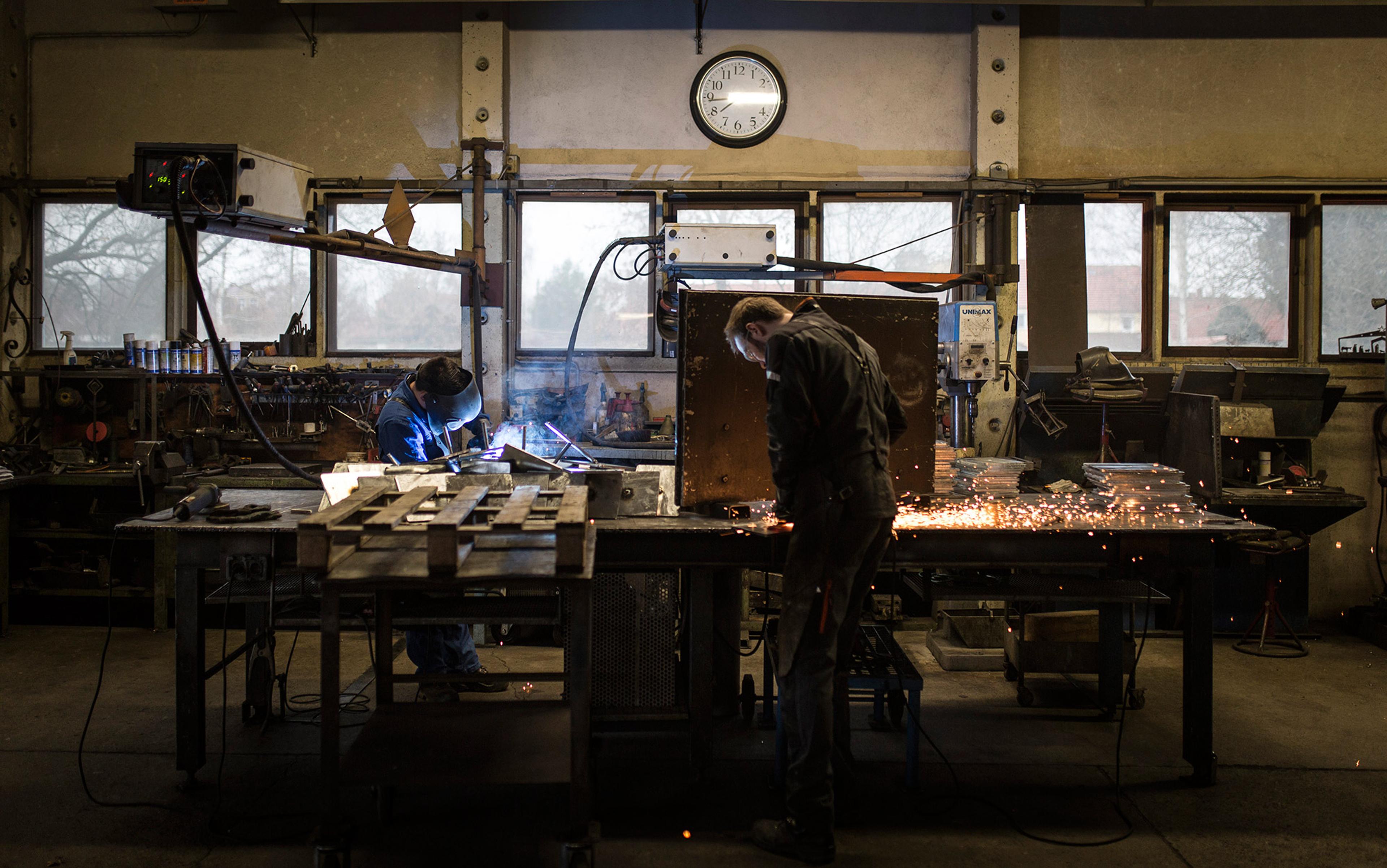Maria Claudia Sanarelli grew up with yarns. She made bracelets from them, played hide-and-seek games inside the stockroom, and built castles with empty boxes on the parking lot. She is one of three daughters of Marco and Daniela, who run a knitwear factory near Arezzo in Tuscany and who encouraged Maria Claudia to do what she wanted when she left school. So she studied engineering in Milan, landing a prestigious job working on the Eurofighter, with the Italian aerospace giant Leonardo. But in 2015, at the age of 30, Maria Claudia had a change of heart. She came home to Arezzo, back to Mely’s, the family company, and began once again to play with yarns.
In Milan, she’d worked on one of the world’s most advanced combat aircraft. Now she’s in charge of operations making knitwear for Italian and French luxury brands. I’m wondering, as we talk, which of her two professions is more important. A strange comparison to make, perhaps, but not to people in fashion who often ask themselves this kind of question. You see, most fashion folk start out in fashion convinced of its importance in spreading the joy of creation, making beautiful things that bring a smile to the face. But then, as they get to know the industry, it turns out to be about money and about driving the engine of consumer spending: of late, it appears to be about using up the world’s finite resources and racking up global warming. To its critics, the growth of fast fashion, and even ultra-fast fashion where clothes are typically worn once then thrown away, has turned fashion into a pariah industry, a disturbing illustration of the self-destructive tendencies of humankind.
Fashion people are frequently defensive when it comes to explaining their world to outsiders. Back in 1899, the American economist and sociologist Thorstein Veblen coined the term ‘conspicuous consumption’, naming the way fashion served to display one’s status and accomplishments. The hangover from that one-dimensional definition lingers still, a sense that fashion is about showing off – silly, immature, fundamentally irrelevant.
When I took a job in early 1990s London, writing about fashion for The Independent, that interpretation was not far removed from how I thought. Yet new ideas were emerging about fashion, sometimes from unexpected sources. Andreas Whittam Smith, the earnest co-editor (and co-founder) of The Independent daily newspaper, took me aside for a conversation that spun off in an unexpected direction. He cited Francis Fukuyama, the American political scientist whose influential essay ‘The End of History?’ (1989) had suggested that the big ideological struggles were over, and that Western liberal democracy had triumphed. In such a world, newspapers should broaden their remit. ‘Go write about the way we live now,’ Whittam Smith said, referencing the title of an Anthony Trollope novel from 1875. News about fashion and wider lifestyle subject matter, he suggested, would become of greater interest to readers in a world of democratic peace.
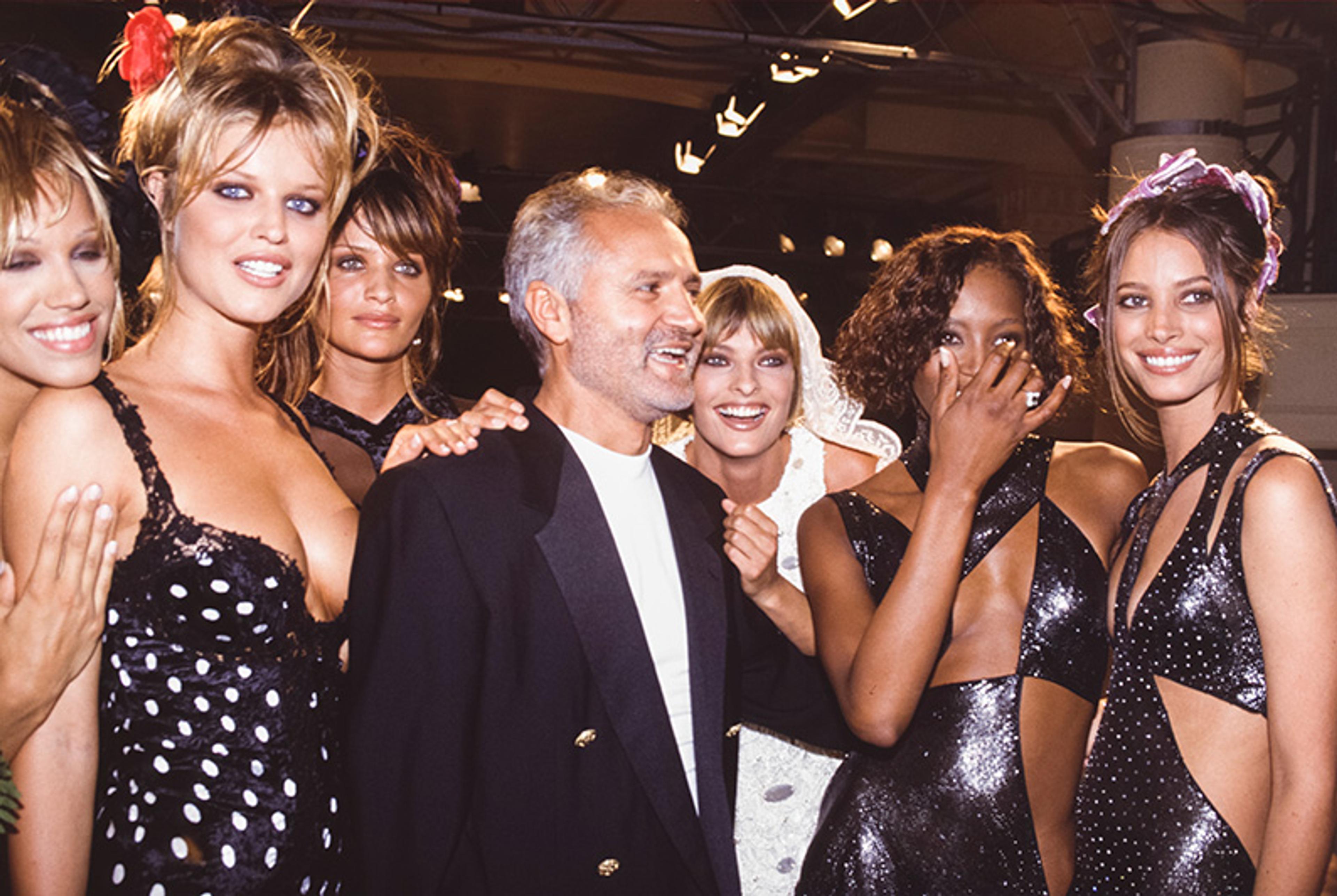
Gianni Versace with the models Eva Herzigová, Helena Christensen, Linda Evangelista, Naomi Campbell and Christy Turlington pictured at a Paris show in 1993. Photo by PAT/ARNAL/Gamma-Rapho via Getty
And so, with the zeal of an anthropologist venturing on his first trip to a foreign land, I went to Paris, Milan and New York, benefiting from the newspaper’s international status to be granted front-row seats alongside the big-name fashion editors. I gawped at the new generation of so-called supermodels, interviewed designers such as Helmut Lang, Issey Miyake, Karl Lagerfeld and Jean Paul Gaultier, and hung out with stylists, photographers, retailers, publicists and the multiple hangers-on who populated the fast-growing fashion world. Even Whittam Smith himself, the son of a vicar from the northwestern English town of Macclesfield, dipped into the whirlwind, attending with me an extravagant Champagne-fuelled party full of A-list celebrities, thrown by Gianni Versace to mark the opening of a New Bond Street store. Red-faced, lost for words, he was swept away by the glamour of it all.
Fashion school attracted many students who considered themselves marginalised, ostracised, different
My somewhat lofty detachment from fashion was thawing. I sat up late into the night in a Paris studio watching a brilliant young man named John Galliano adjust and readjust hemlines. I observed front-row editors with tears in their eyes at the beauty of a Byzantine-inspired collection by Romeo Gigli. I laughed as the model Naomi Campbell stumbled over Vivienne Westwood platforms and collapsed in giggles. I sought out new names such as Belgium’s publicity-shy Martin Margiela and sat (literally) at the feet of an ageing Yves Saint Laurent begging for a quote.
Perhaps most unexpectedly I began to appreciate the specialness of what I was seeing. Shows by Comme des Garçons and Hussein Chalayan were among many moments of revelation. Beyond the beauty, I saw that clothes were signifiers, replete with multiple interpretations. They were suits of armour against the outside world, or tools for ‘the presentation of self in everyday life’, to cite the title of the sociologist Erving Goffman’s seminal book. To some, fashion was an open-to-all art form, a democratic, accessible means of self-expression. I saw people at home in the welcoming embrace of fashion and its milieu, whether in the reverential calm of a tailor’s fitting room on Savile Row, or on the catwalk at a high-spirited fashion event in São Paulo, or out loud and proud on the annual Pride march in London. I appreciated, too, how the fashion universe was full of liberating pleasures and represented a special safe haven for creatively inclined young people. At Central Saint Martins, the London arts college where I started part-time teaching in 2000, the fashion school attracted many students who considered themselves marginalised, ostracised, different.
It wasn’t just journalists who were taking fashion seriously. In the 1990s, when the designer fashion world was growing energetically, academics injected new vigour into the analysis of fashion. Feminist fashion historians argued that Veblen – together with modern thinkers such as the French philosopher Jean Baudrillard and the English art historian James Laver – offered simplistic explanations of fashion and trivialised women’s behaviour (while Veblen thought fashion was all about wealth signalling, Laver came up with a ‘seduction principle’, concluding that ‘our clothes are dictated by the fundamental desires of the opposite sex’). Elizabeth Wilson’s Adorned in Dreams: Fashion and Modernity (1985) dethroned these thinkers as one-track theorists. In 1997, the American curator and author Valerie Steele founded Fashion Theory: The Journal of Dress, Body and Culture to explore ‘the cultural construction of the embodied identity’. Its papers on everything from fashion and politics to affective fashion trends (to cite the August 2024 volume alone) have become a must-read for all fashion academics.
A few years into my immersion in fashion, a new phenomenon emerged that was not initially perceived as a problem. The fast-fashion system that evolved in the late 1990s took the selling of cheaply made fashionable garments to a new level, with retail brands such as Zara in Spain delivering new drops, mostly made in Spain, to their stores across Europe on a weekly basis to encourage consumers to shop more regularly and spend more. Like many fashion journalists, I perceived this as the ultimate democratisation of fashion, extending its pleasures to almost every consumer.
However, as new entrants copied the Zara formula and the pressure to reduce prices intensified, fast-fashion players began to focus their garment sourcing on low-cost countries across Asia to make their clothes even cheaper (Zara itself did not wholly make this shift). The ‘faster’ the fashion, the more a ‘wear once, throwaway’ ethos took root. A wake-up call that exposed the wasteful exploitative churn of it came with the Rana Plaza disaster in Bangladesh in 2013, in which at least 1,134 people – mostly garment factory workers – died inside an eight-storey building that collapsed. The tragedy highlighted the emergence of a global supply chain in which the people at the bottom of the chain in the Global South were exploited by corporate giants delivering ultra-cheap clothes to Western retailers. Could it be, we fashion journalists began to ask each other, that fashion was not just frivolous, but also immoral?
I look back with some embarrassment at my younger self, swanning around Paris, Milan and New York
At Central Saint Martins, which is part of University of the Arts London and where I have now taught for 25 years, the fast-fashion phenomenon, with its sweatshop cultures and zero-hours contracts, prompted soul-searching by colleagues. Tamsin Blanchard, a distinguished former fashion editor of The Observer, The Independent and The Telegraph Magazine, no longer spends money on clothes. She wrote Green Is the New Black (2007), one of the first books to question the fashion system, and has lobbied for Fashion Revolution, a nonprofit organisation campaigning for an industry overhaul. These days, Blanchard is the editorial director of Estethica, an ethical showcase that supports change at brand level. Tiffanie Darke, a former editor of Style, the fashion supplement of The Sunday Times, and a former editor-in-chief at the luxury department store Harrods, now describes both jobs as ‘inciting desire’, as though it were a kind of hate crime. Wanting ‘to change the [fashion] world’, Darke now writes with passion and the zeal of a convert a Substack titled ‘It’s Not Sustainable’, calling out the failings of the fashion industry.
Where does all this theoretical and ideological criticism leave those of us who empathise with Blanchard and Darke but haven’t ditched fashion conceptually? I look back with some embarrassment at my younger self, swanning around Paris, Milan and New York in the 1990s, partying with the in crowd. That young journalist-anthropologist, for all his proud sense of sitting apart from the fashion mainstream, was just another excitable voice in the media frenzy, massaging the egos of designers, pumping the spending machine and inciting empty desire.
The alternative that Blanchard envisions is the rediscovery of a ‘slow’ fashion world, where clothes take time to create, are made to last, and are developed by companies espousing sustainable values. Slow fashion invariably means more expensive clothes – therefore the luxury sector is its natural driving force (although we should not put them too high on a pedestal: some luxury brands do cut corners and work with questionable subcontractors for their lower-priced products – currently the focus of an ongoing investigation by the Milan Public Prosecutor’s Office). All clothes were made the slow way before the invention of the sewing machine in the 1830s. Garment sweatshops emerged in the decades that followed, yet their impact was not always negative: the American economist Jeffrey Sachs described them as ‘the first rung on the ladder out of extreme poverty’.

At work at Italian knitwear specialist Mely’s, near Arezzo.
It was out of my interest in connecting with the slow values of luxury fashion that I met Maria Claudia Sanarelli, the engineer turned knitwear specialist, and visited the family company of Mely’s, six kilometres southwest of Arezzo in Tuscany. While the vision of Italy as a land of family-run workshops is something of a cliché, here the cliché appears to live on. Over a glass of wine and a plate of mushroom pasta, Maria Claudia’s father, Marco, a bearded bear of a man, talked with pride about the skilled workers he employs. ‘Tuscany is the home of well-made things,’ he told me. ‘Here there is artisan work of absolute quality … But the real treasure is the experience of the artisans, these wonderful hands who know how to make the very best.’
The makers believe they are in a fight to sustain the artisanal traditions of Italian luxury fashion
All of this know-how faces multiple challenges in a modern world in which scale, speed and cost are dominant factors. That’s why an ambitious move to consolidate the luxury sector’s fragmented Italy-dominated production chain within one integrated platform is underway. Gruppo Florence, Mely’s mother company, was founded in 2020 and has assembled a formidable manufacturing force comprising, at the latest count, 37 specialised factories including woven and knitted ready-to-wear, denim, soft accessories, shoes and hats, and more than 4,000 employees in nine regions of Italy. They share access to both logistical and creative resources and benefit from an intense collective focus on research and development.
Thus, Mely’s and the Sanarellis have now become part of a group with a turnover of approximately €800 million (US$884 million) and in which the private equity firm Permira has acquired a majority stake (the families joining Gruppo Florence retain minority stakes) with a view to an eventual flotation on the Milan stock exchange. This is more than a business deal, and certainly not a Faustian pact, insist the makers, who believe they are in a fight to sustain the artisanal traditions of Italian luxury fashion. In an effort to emphasise (in marketing terms) the expertise of the makers, Attila Kiss, the chief executive officer of Gruppo Florence, who worked as the chief operating officer at Balenciaga in the brand’s boom years of the mid-2010s, has banned the word ‘factory’ from the group’s lexicon. The word to use now is ‘laboratory’, in keeping with the emphasis on research and development. And Gruppo Florence? It is like an ‘orchestra with room for virtuosity’.
The luxury sector has argued for years that a vast unsung army of artisans with specialised skills and a long history of preserving technical knowledge, transferring it down the generations, represents the ultimate riposte to the fast-fashion system. If we make luxury goods with passion and emotion – and wear them similarly, darning clothes when they develop holes, refurbishing shoes and bags when they fray – then we appreciate them more and shop less. The most expensive fashion item I bought in my 20s, a pair of shoes by the designer Oliver Sweeney, were resoled three times and lasted me a decade. The logic here is similar to that espoused by the Slow Food movement, founded by the Italian activist Carlo Petrini in 1986, which sought to counter fast food by preserving traditional cuisines and local ecosystems. Just as with the Slow Food movement, there are some uneasy compromises in the mix: in the case of food, this involves protecting small food producers from the global food system, while at the same time integrating them within it. For luxury fashion, the small artisanal workshops of Italy are preserved, in protectionist fashion, within a global system dominated by two giant groups, LVMH (which owns Bulgari and Fendi, among others) and Kering (whose brands include Gucci and Balenciaga).
At Mely’s, I’m seduced by the artisans I meet. Most are long-term employees with an intense dedication to their craft, often following a parent or relative into the factory. Driving west to meet Giovanni Taccetti, éminence grise of the shoemaking Taccetti family, I saw the same pattern. Giovanni is now deep into his 70s, like his brother Carlo, but my visit gives him an excuse to drop by the factory in Montelupo Fiorentino, a short drive from Florence. He started work at the age of 14. ‘At home, I breathed in the scent of shoes,’ he recalls of growing up in the 1950s. Later, he says: ‘I came into the factory at seven in the morning. I came in on Saturday and Sunday. This place was like my wife.’

The handlooms at Antica Valserchio, Castelnuovo di Garfagnana

A skilled employee working with leather at Ciemmeci, near Florence
The next day, driving north into the Apennines, I visited Antica Valserchio, in the town of Castelnuovo di Garfagnana. The creations here are woven textiles made with sophisticated modern machinery, as well as on decades-old hand looms. Hand-weaving is exceptionally slow, but the looms are treated with reverence, as if the very soul of Antica Valserchio, dating from the company’s founding in 1947, is embedded within.
The pleasures of fashion are more accessible than the kind of art you might find in a gallery
Italy may be the leading manufacturer of luxury goods in the world, but it is not the only place where artisanal expertise is being appreciated and protected. Across the globe, makers of luxury products in every imaginable category are working hard to emphasise ‘slow’ values – artisanship, craft, authenticity. In west Africa, events such as Lagos Fashion Week are challenging Western dominance of luxury, and promoting regional expertise in textiles. In Japan, skilled craft workers, anointed as ‘Living National Treasures’, receive government subsidies. Last December, in China (often considered a ‘fast fashion’ country where quantity trumps quality), I visited Xiuniang, a family-run business on the edge of the historic town of Suzhou that boasts an exceptional silk embroidery workshop preserving ancient skills. Further south, in Shenzhen, a designer named Liang Zi told me how she has preserved a centuries-old way of making silk fabric that involves dyeing the silk with a Chinese yam juice and spreading the cloth covered in river mud in the fields to dry in the sun. She sells her deep-brown silk garments under the Tangy brand name in a boutique on the Left Bank in Paris.
Does luxury matter in a world in frantic turmoil? I would argue that it does. Craft has long been perceived as the poor cousin of high art, but does art have to hang on the wall of a gallery? There is artistry aplenty in what you can do with fabric – and the pleasures of fashion are more accessible than the kind of art you might find in a gallery. Consider the massive fan-base that the Canadian fashion blogger Derek Guy attracted after he began offering detailed commentaries on the dress sense of public figures (including the exquisite design features of suits worn by King Felipe of Spain).
Sometimes, we can dare to apply the word ‘art’ to fashion – to an haute couture dress, hand-stitched, hand-embroidered, hand-dyed, hand-beaded, and made in a Paris atelier to embody the design vision of an inspired couturier. For some decades now, such pieces have become collectables, sought by private collectors and museums alike: Coco Chanel and Christian Dior have earned their place as artists alongside Pablo Picasso and Gustav Klimt. The enduring status of the greatest fashion is evidenced in the current enthusiasm among celebrities for wearing vintage or vintage-inspired pieces by storied luxury brands on the red carpet, prompting a new generation to redefine second-hand as covetable and collectible.
My personal journey through fashion has taught me that luxury can be a nurturing, positive force for good. Perhaps you can’t afford a Tangy gambiered (or mud) silk shirt or a cashmere cardigan made by Mely’s for a French luxury brand. But luxuries come large and small. Maria Claudia Sanarelli relates the story of a former Mely’s employee who left the knitwear company to redirect her obsessive, precise, super-creative skill sets into launching her own pasticceria. One of her bestsellers, which I sampled over an espresso, is a miniature custard tart topped with neatly segmented strawberry and blueberry. Heaven in a mouthful! If you don’t have the means to buy a Mely’s sweater, try the pasticcini of Arezzo. And then tell me that luxury does not matter.
